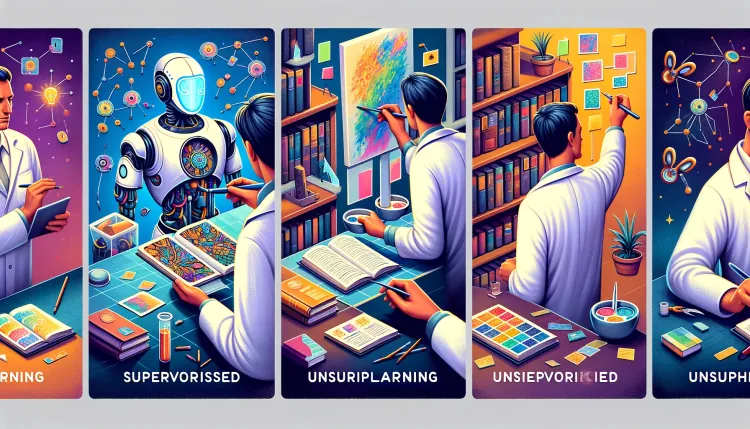Supervised and unsupervised learning are 2 superior methods of instrumentality learning, each with its chiseled characteristics and applications. Understanding the quality betwixt these methods tin assistance successful choosing the close attack for circumstantial information subject tasks. Here’s a breakdown of both:
Supervised Learning

Definition and Characteristics:
- Supervised learning involves grooming a exemplary connected a labeled dataset, which means that each input information constituent is paired with an output label. The exemplary learns to foretell the output from the input information during grooming by minimizing errors.
- Examples of supervised learning: Regression (predicting a continuous output), and classification (predicting discrete labels).
Process:
- Training phase: The exemplary is trained connected a pre-defined acceptable of information examples, which person known responses. It learns the narration betwixt the features and the outputs.
- Testing phase: The exemplary is tested connected a abstracted dataset to measure its quality to generalize to new, unseen data.
Applications:
- Email spam filtering (spam oregon not spam)
- Medical imaging diagnosis
- Stock terms prediction
Unsupervised Learning
Definition and Characteristics:
- Unsupervised learning involves grooming a exemplary connected information without immoderate labels. The exemplary tries to larn the underlying patterns and operation from the information without immoderate explicit instructions astir the outcome.
- Examples of unsupervised learning: Clustering (grouping akin instances together) and relation (discovering rules that seizure associations betwixt items).
Process:
- Pattern detection: The algorithm tries to find patterns and relationships successful the information by looking astatine intrinsic structures, specified arsenic groups, clusters, oregon commonalities.
- Model application: The patterns are utilized to marque decisions astir the data, similar segmenting a marketplace based connected lawsuit behavior.
Applications:
- Market segmentation (identifying chiseled groups wrong customers)
- Anomaly detection (identifying uncommon events oregon errors)
- Organizing ample databases into clusters
Key Differences
- Nature of data: Supervised learning requires labeled data, which tin often beryllium costly oregon time-consuming to obtain. Unsupervised learning uses unlabeled data, making it much flexible and wide applicable successful situations wherever labeling information is impractical.
- Complexity and cost: Supervised learning mostly requires a higher level of quality effort and knowing to hole the grooming set. Unsupervised learning tin beryllium much challenging to instrumentality arsenic the results are harder to measure without predefined labels.
- Outcome: The result of supervised learning is mostly much predictable and understandable, arsenic it maps to pre-known labels. Unsupervised learning outcomes tin beryllium little predictable arsenic they beryllium connected the operation discovered successful the data.
Conclusion
Choosing betwixt supervised and unsupervised learning typically depends connected the information disposable and the circumstantial occupation being solved. Supervised learning is preferable erstwhile you person wide objectives and labeled data, portion unsupervised learning is suitable for exploring information and discovering hidden patterns erstwhile the information lacks labels.
 (2).png)
 1 year ago
27
1 year ago
27











 English (US) ·
English (US) ·